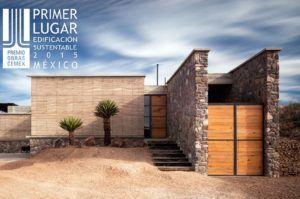Is CEMEX threatened by environmental regulations? Quite the opposite

CEMEX, a leading global cement producer, faces more stringent sustainability pressures. The firm responds by going a step beyond the strictly required.
Cementos Mexicanos (CEMEX) is one of the largest players in the cement producing industry, one of the most energy and resource intensive in the world. By some accounts, the current cement technology still requires more energy and raw materials than are projected to be sustainable. One would expect this condition to be translated into higher pressure from public entities to curb impact on the environment and, therefore, into more strained business conditions for the incumbent companies. [1, 2]
However, CEMEX has complied with the ever more stringent regulatory scene pursuing sustainability, and has tried to go a step further. Having published yearly environment and sustainability reports since 1996 and being the only Mexican company to be included in the UN’s Global Compact 100, CEMEX is arguably among the most environmentally-committed Mexican firms. Effectively, CEMEX has embraced sustainability. [3, 4]

CEMEX has acted along three dimensions: achievement of non-compulsory certifications, expansion of sustainable product portfolio and intensification of public communication on related topics.
The company has earned vast third-party recognition for its superior commitment to sustainability. Instances of such recognition include:
- First construction materials company to meet ISO 50001 (Energy Management System) certification requirements in the Philippines. [5]
- First company in the building materials industry to provide its customers with a carbon footprint tool for its key products. DNV, a leading environmental certification organization verified and endorsed the tool. [6]
- 18 conservations programs (15 in the US, 3 in Mexico) earned the Conservation Certification granted by the Wildlife Habitat Council for their efforts on habitat restoration and related educational visits. [7]
- 6 cement plants earned the US EPA Energy Star certification; One of them has earned this certification for 8 consecutive years, an achievement attained by only one other plant in the United States. [8]
Furthermore, CEMEX is actively orienting its product development towards more environment friendly products, anticipating trends in market and regulatory needs. Some recently developed products are:
- Aquacrete, a permeable yet structurally strong concrete ideal for road infrastructure. It allows water to flow better to canals and into storm drains, minimizing flood risks. [5]
- Promptis, an ultra-fast setting concrete used to pave roads, which can now be accessed after 24 hours, a markedly short lead time, thus reducing increased car pollution resulting from traffic alterations. [5]
- Hidratium, a concrete with self-curing properties that reduce the amount of water consumed in the setting process by approximately 80%. [9]
- Insularis, a portfolio of concretes with enhanced thermal insulation, which results in improved energy efficiency of buildings. [10]

Finally, CEMEX directs significant resources to increase the public awareness on the issue and recognize suppliers, customers and other third parties that actively try to address it. Three examples of this effort are:
- The Nature Series, which leverages great photography and narrative to warn people about the urgent need to preserve natural resources. For its latest release, CEMEX collaborated with partners that promised maximize the exposure of the publication (such as Conservation International, Earth in Focus, and The Wild Foundation). [11]
- Premio Obras (Site Award), a 25-year-old award to the best of construction in Mexico; one of the nine categories, Sustainable Construction, bases 50% of the evaluating criteria on the efficient use of resources. [12]
- Premio Intégrate (Integrate Award), a program to recognize suppliers for “their innovation and their contribution to the company and the environment.” In the 2016 edition, the first place was awarded to Grupo Kopar for improvements in dust collectors’ efficiency. [13]
CEMEX describes itself as company committed to sustainable economic growth, and it is effectively stepping beyond the mere compliance of regulatory measures. The company is strengthening its stance on sustainability issues by executing highly visible actions directed at most of its stakeholders (more environmental friendly products for its customers, widely publicized recognition for the environment-caring members of the construction industry, and world-class bibliographic productions for the general public). Juggling these initiatives implies a considerable expense and effort. Will CEMEX’s shareholders be ultimately pleased by such investments? [14] (659 words)
1 Sun, H., Jain, R., Nguyen, K. & Zuckerman, J. 2010, “Sialite technology–sustainable alternative to portland cement”, Clean Technologies and Environmental Policy, vol. 12, no. 5, pp. 503-516.
2 “Mexican cement producer Cemex 3rd-qtr profit beats expectations,” Reuters News, October 27, 2016, via Factiva, accessed November 2016.
3 CEMEX, “Reportes Relacoinados con Sustentabilidad,” http://www.cemex.com/ES/DesarrolloSustentable/InformesGlobales.aspx
4 United Nations Global Compact, “Demonstrating the Financial Potential of Sustainability,” https://www.unglobalcompact.org/take-action/action/global-compact-100
5 “CEMEX celebrates 110-year milestone of building a better future,” Manila Bulletin, October 30, 2016, via Factiva, accessed November 2016.
6 “CEMEX unveils carbon footprint,” Ecology, Environment & Conservation, December 24, 2010, via Factiva, accessed November 2016.
7 “CEMEX’s conservation programs certified by the Wildlife Habitat Council,” Dow Jones Institutional News, October 3, 2016, via Factiva, accessed November 2016.
8 “Six CEMEX USA cement plants earn EPA’s Energy Star,” Energy Monitor Worldwide, August 14, 2014, via Factiva, accessed November 2016.
9 “CEMEX launches its 2nd global ready-mix concrete brand: Hidratium,” Business Wire, January 25, 2012, via Factiva, accessed November 2016.
10 “CEMEX’s Insularis concrete at center of new building solution awarded local grand prize for innovation by VINCI in France,” Mena Report, March 29, 2014, via Factiva, accessed November 2016.
11 “CEMEX presents ‘A Geography of Hope: Saving the Last Primary Forests’,” ENP Newswire, October 19, 2016, via Factiva, accessed November 2016.
12 CEMEX, “Premio Obras CEMEX,” http://www.cemexmexico.com/PremioObra/CategoriasyPremios.aspx
13 “CEMEX recognizes Mexican suppliers,” ENP Newswire, October 13, 2016, via Factiva, accessed November 2016.
14 CEMEX. “Construyendo un mejor futuro. Informe Anual 2015,” http://www.cemex.com/CEMEX_AR2015/ESP/index.html



I was not aware that Cemex was so committed to sustainability – and for so long – so your post is really clarifying to me. I was impressed not only by their ability to innovate on product development, but also on their relationships with suppliers. I applaud the fact that they have been recognizing suppliers that actively try to manage climate change, but I would like Cemex to go one step further: is the company prepared to enforce certain standards on its suppliers (i.e. emissions, energy efficiency, etc), just buying from those who comply (even if it implies a premium) and excluding those who don’t from its supply chain? In my view, actively working together with stakeholders can make a huge difference, and in this case it can have a much more widespread impact, given Cemex’ size and its importance in global markets.
This is fascinating to read. It looks like cemex is doing a lot of things right, I had no idea. I think the question you asked at the end is really key. Do you know if they are able to show any improvement in revenues (due to customer goodwill towards the company) as a result of all the sustainability initiatives they are taking? If not, do you think if this doesn’t translate into some benefit the company will be as enthusiastic about sustainability initiatives going forward?
It was interesting to read about one of the largest players in an industry that is one of the main culprits of global warming.
There is a certain school of thought that assumes that we should not worry about climate change and sustainability because the technological advancements will either reverse the effects of climate change or mitigate the loss of natural resources due to increased efficiency. Many environmental scientists are skeptical about that view – with a delicate subject matter as environmental balance and non-replaceable natural resources, humans need to apply the rule of conservatism and assume worst case scenarios.
Cemex seems to have adopted a technology focused approach in their sustainability program focusing on product innovation to contribute to a more sustainable world. However, I do not see the greater effect of harmed natural resources and harmful effects of cement production to the nature being mitigated by the company. Therefore, the product innovation they have come up with so far only looks like yet another form of ‘green washing’.